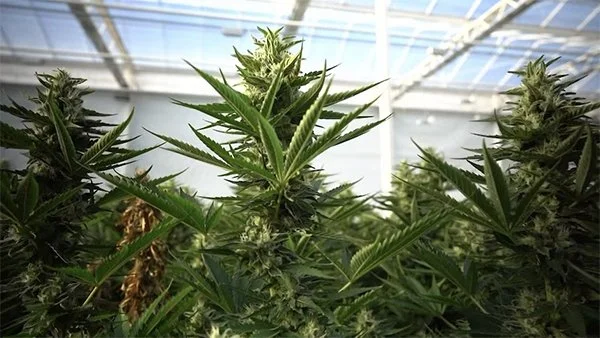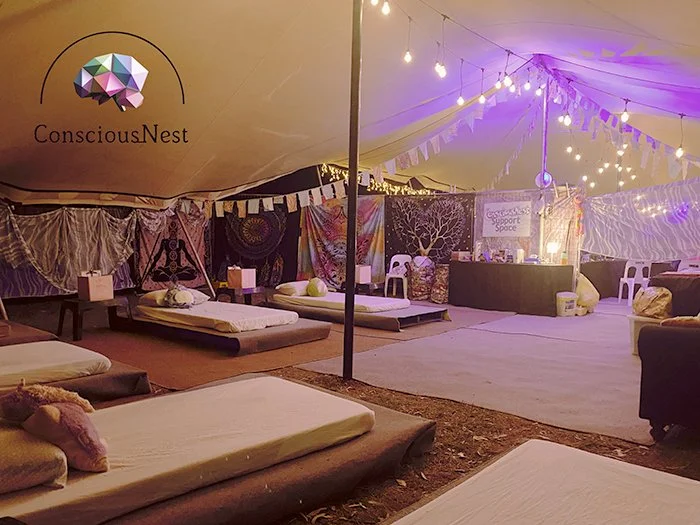
2025 Garden States Presentations
More to be announced soon!
Drug Checking as a harm reduction measure for people who self-medicate with psilocybin mushrooms
Sam Lasham
Background: Thousands of people use psilocybin (‘magic’) mushrooms annually in New Zealand, with around half of these people having used them to self-medicate mental health disorders. Use of psilocybin mushrooms risks drug-associated harm such as consumption of toxic or contaminated mushrooms, bad trips’, muscle paralysis, or hallucinogen persisting perception disorder.
Psychedelic Fish: A Review of Ethnobiological, Toxicological, and Cultural Perspectives
Anna Ermakova
The phenomenon of "dream fish", i.e. marine species purported to induce hallucinogenic experiences when consumed, has intrigued ethnobiologists, toxicologists, and psychonauts for decades. This literature review synthesizes multidisciplinary research on species such as Sarpa salpa (commonly known as the “dreamfish”), various rabbitfish (Siganidae), and select members of the Kyphosidae and Mullidae families, all anecdotally associated with hallucinogenic effects in humans.
A Tribute to Daniel Siebert
Daniel J. Siebert, discoverer of the hallucinogenic effects of salvinorin A, died in 2024. As one of the many researchers who built on his work, here I will pay tribute to his remarkable scientific discoveries. Siebert was a self-trained but rigorous scientist and a pioneering self-experimenter. He was one of the most significant figures in recent ethnopharmacology, and helped to spark the ongoing psychedelic renaissance.
A History of Pot Political Parties and Progress in Australia
Rachel Payne MP, David Ettershank MP, and Michael Balderstone
The evolution and growth of the Legalise Cannabis movement in Australia, from grassroots activism to registered political entities.
The Legalise Cannabis Parties evolved from a grassroots movement that began in the '70s, with the founding of the Australian branch of NORML (National Organisation for the Reform of Marijuana Laws).
Harry Pack & The Purple UFO
Harry Pack
In this talk, artist Harry Pack explores how creative expression can be a powerful tool for integrating altered states, supporting mental health, and deepening self-understanding. Drawing from his own journey, he shares how art has helped him make sense of visionary experiences and emotional healing.
He will introduce The Purple UFO, a collaborative platform that uses art as a bridge between inner transformation and community connection—bringing people together through shared creativity, nature-inspired practice, and open conversation around consciousness and integration.
Psychedelics and Soul
Nigel Strauss
Can Psychedelics help us lead rich and meaningful lives? As a psychedelic researcher and therapist, Dr Nigel Strauss psychiatrist, has helped pioneer the current medicalisation of psychiatric substances in Australia for the treatment of psychiatric disorders. But he has also written extensively about the shadow side of this development.
Ask Me Anything - Q&A session
David Nickles
Over the last two decades of participation in psychedelic spaces, David Nickles has contributed to a wide range of research, harm reduction, and advocacy projects relating to drugs, plants, and the people who use them. He has helped run the DMT-Nexus forum, collaborated on underground research projects (such as phytochemical analysis and connecting drug using populations with researchers interested in their experiences), contributed to harm reduction projects (including drug checking and peer support at live events), and worked to disseminate open source resources for developing sustainable, self-sufficient relationships with psychoactive materials.
Ayahuasca and Time Travel
Alex K. Gearin
When consuming ayahuasca, the usual sense of being located in a present distinct from the past and future can dissolve or stretch, giving rise to vivid encounters with multiple and alternating temporalities. In Amazonian cosmogenic myths and initiation rituals, ayahuasca has long been used to transport neophytes to the origins of life, inviting the presence of creator beings and planetary ancestors.
Practical note from the underground: Psychedelic care spaces
Brooke Walters
For more than a decade, ConsciousNest has been at the forefront of community-led harm reduction and psychedelic care within Queensland’s music-event landscape. Established in 2014 and sustained without government funding, ConsciousNest has evolved into one of Australia’s most recognised grassroots models for creating compassionate, safe, and evidence-informed care spaces at festivals and nightlife events.
From Clinics to Community: Exploring the Spectrum of Psychedelic-Assisted Psychotherapy in Australia
Petra Skeffington and Dr Stephen Bright
This presentation will explore what we have learned through the lived experiences of individuals undergoing Psychedelic Assisted Psychotherapy about the suitability of these treatments in a range of different clinical and non-clinical settings. Our aim is not to advocate for one approach over the other, but to clarify the different roles that these therapies can play in healing, depending on the individual and their circumstances.
The Botanical Roots of Ecstasy
Jeremy J, Torsten Weidemann and Dr Adam J. Carroll
From alchemical elixirs to modern psychedelics, the pursuit of consciousness-altering substances has long followed the fragrant trail of the plant kingdom. This presentation explores the historical and biochemical lineage connecting alchemy, the distillation of botanical essences, and the development of psychedelic phenethylamine analogues based on the prototypical compound mescaline.
What is altered in an altered state of consciousness?
Vince Polito
There are currently roughly 100 new scientific papers published on psychedelics and other altered states of consciousness each week. There is broad agreement that these kinds of interventions can have considerable positive impacts on a broad range of mental and physical health conditions. And so a lot of these papers are focused on exploring these clinical outcomes – for example we see many graphs showing that levels of depression and anxiety drop after psychedelic assisted psychotherapy. However, across this booming scientific literature, there is surprisingly little information about what actually happens to participants’ state of consciousness during these interventions.
The Regulation of Cannabinoid Accumulation
Lennard Garcia-de Heer
From single-digit THC percentages in the 70’s to modern varieties pushing 35% and beyond, Cannabis breeding is a rapidly developing space. Despite the incredible success of underground breeders, Cannabis development was stifled for a century.
Australian Psilocybe and their Ecology
Caine Barlow
The past decade has seen a significant turnaround in our understanding of the genus Psilocybe in Australia, with passionate citizen scientists contributing to a deepening understanding of ecology and distribution of many species.
This talk examines both well known species of Psilocybe, reviewing what we know, and discussing new species being found which have contributed to a dynamic picture of species over space and time.
Global Mushroom Magic: Current Legal Models of Access to Psilocybin Around the World
Martin Williams
Psilocybin is a Schedule 1 Prohibited Substance in most parts of the world, but various jurisdictions are enabling access to psilocybin by one (or both) of two pathways: decriminalisation and legalisation. This talk will provide an overview of the current legal status and models of access to psilocybin in various countries, and the way forward in medical and non-clinical contexts.
Acacia Crossroads
Nen
This talk will look at some of the lesser-known but fairly common medicinal and psychoactive compounds in Acacia sensu lato (worldwide) which have important applications, barely yet explored by the scientific world. Also, we will look at the profound cultural/spiritual significance of these trees, which sets them apart from other kinds of healing or sacred plants.
Psychoactive Cacti Chemistry
Liam Engel
This lecture examines the cultural, legal, pharmacological, and conservation dimensions of mescaline-containing cacti, emphasising San Pedro (Trichocereus spp.), Peyote (Lophophora williamsii) and their chemical analysis using liquid chromatography–mass spectrometry (LC-MS).
Fruiting Bodies, Political Depression and Composting the Psychedelic Dream
Samuel Douglas
What happens after the dream dies? After it’s co-opted, diluted, and sold back to us in government-approved doses for those who can afford it, while those who can’t risk their freedom for a glimpse of transcendence? This talk is for those sitting with the weight of these questions.
Wood-lover paralysis: what we know so far
Caine Barlow and Dr Simon Beck
Caine Barlow and Dr Simon Beck ran a citizen-science survey aiming to provide the first systematic description of the “wood-lover paralysis” phenomenon and try to identify any clear factors that might predict or explain the seemingly random nature of its occurrence. Join them to learn about the findings, their thoughts on several theories about the phenomenon, their experience of trying to undertake the research, observations on the spread of (mis)information and their harm reduction advice.
Determination of Psychoactive Alkaloids in Psilocybe subaeruginosa of Victoria by HPLC-PDA
Mohammad Reza Mirzadeh
Psilocin, psilocybin and the associated tryptamines are psychoactive alkaloids which are naturally synthesised by Psilocybe (Fr.) P.Kumm. fungi, commonly referred to as magic mushrooms. These psychoactive fungi were and may still be used in traditional healing rituals, particularly by certain ethnic groups for mental healing, influencing modern psychedelic studies. Since these substances are intermittently determined in analytical laboratories, validated methods for fast, accurate and reliable analysis are in demand.




















